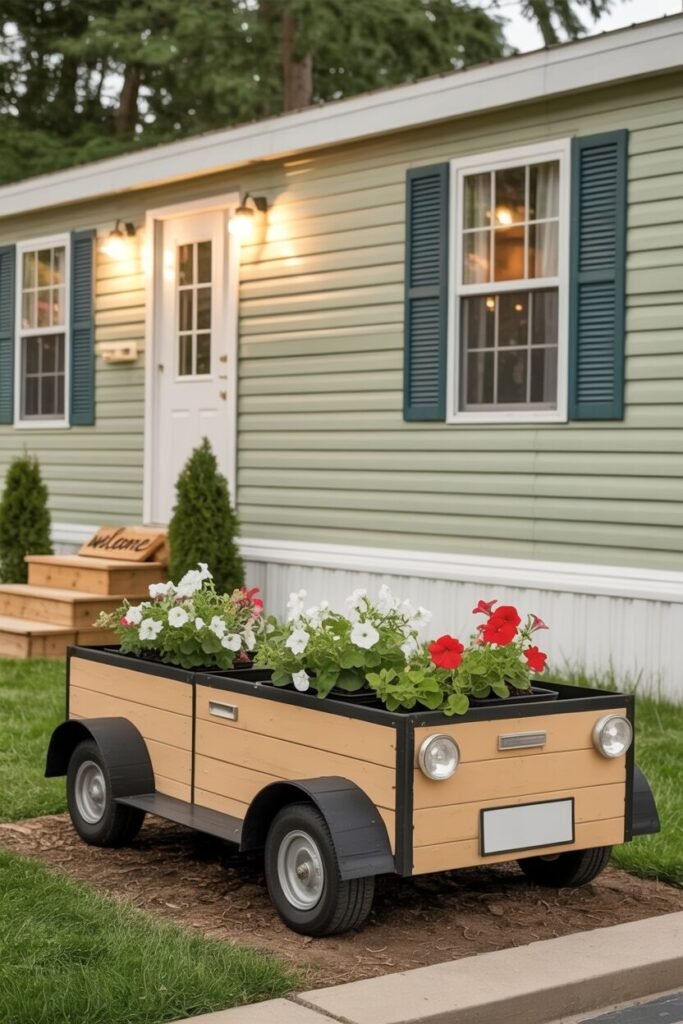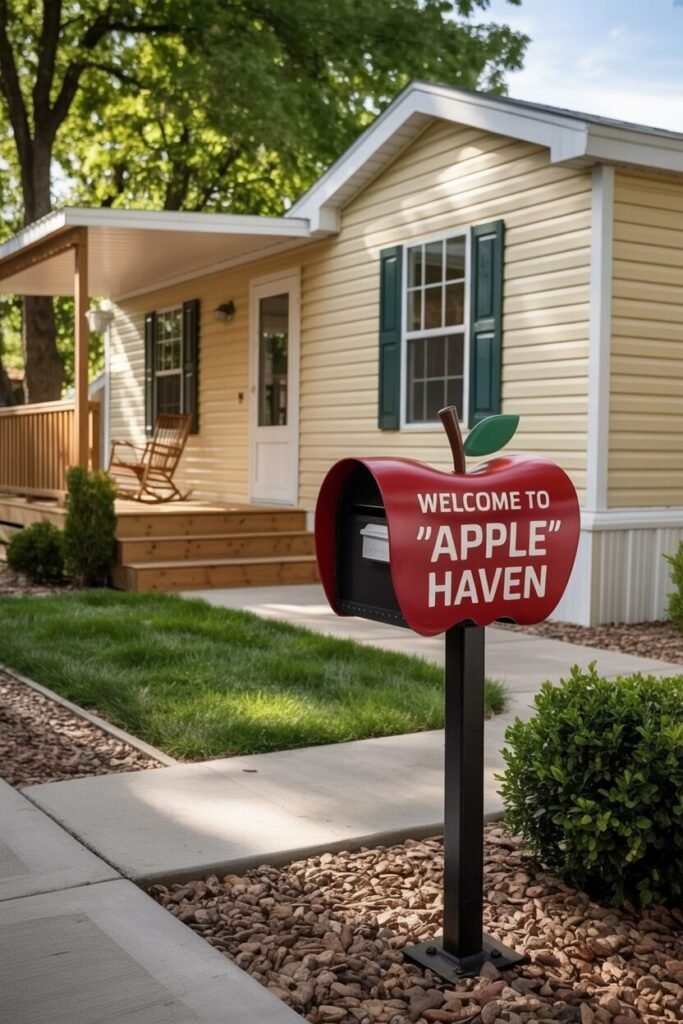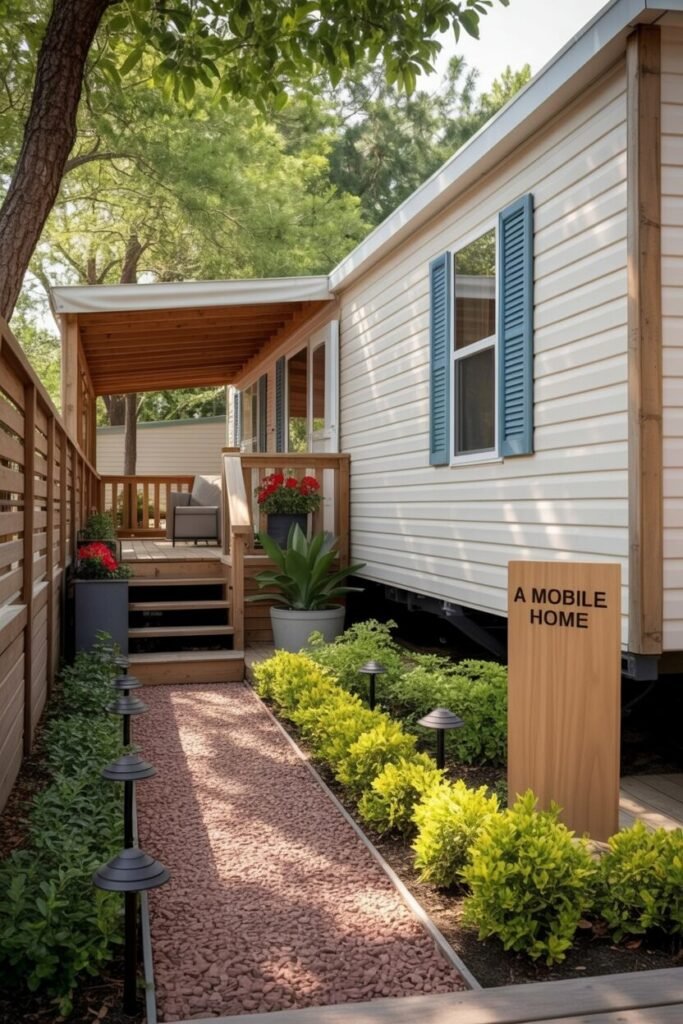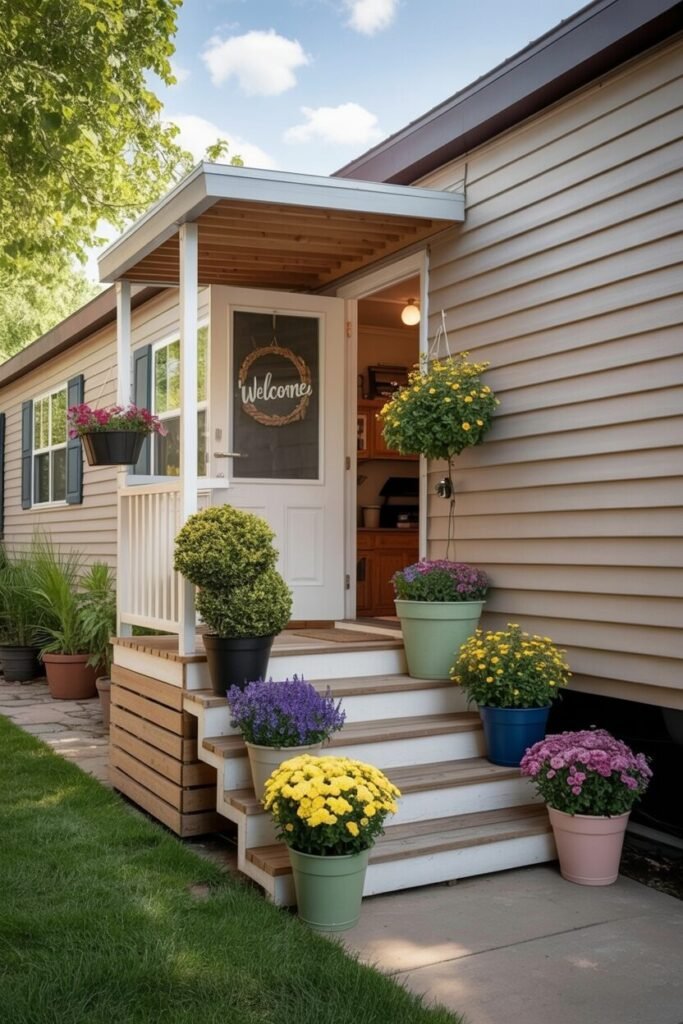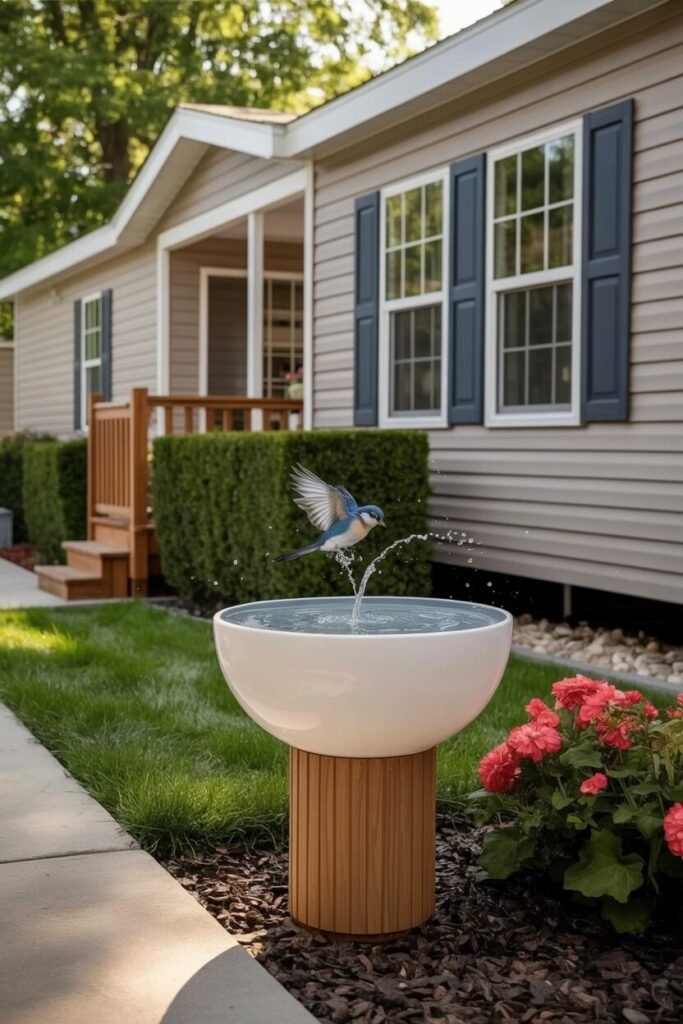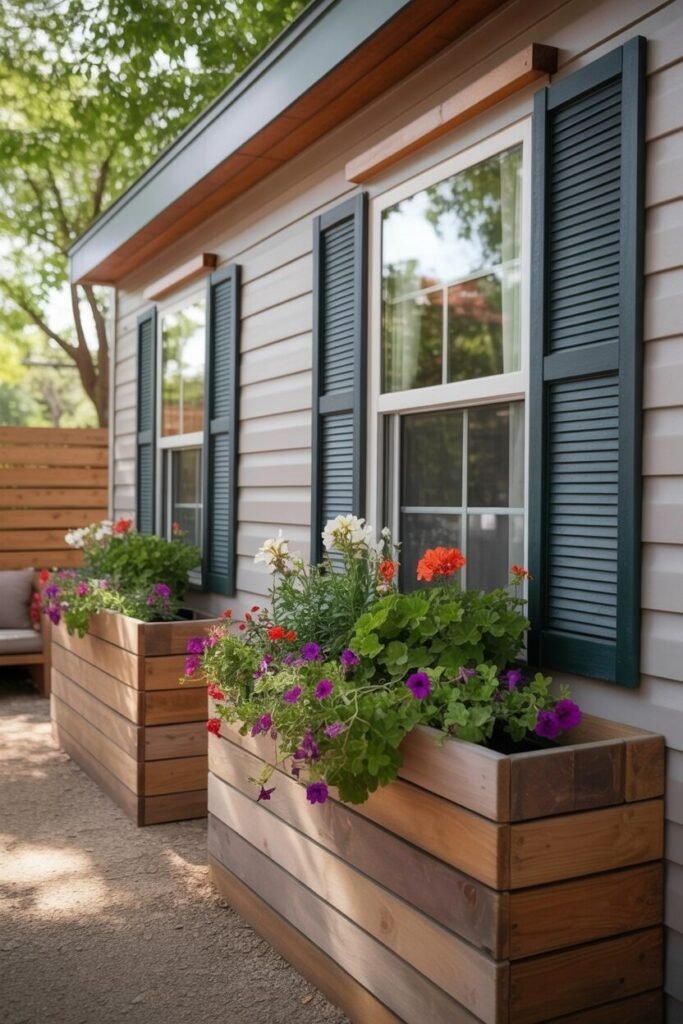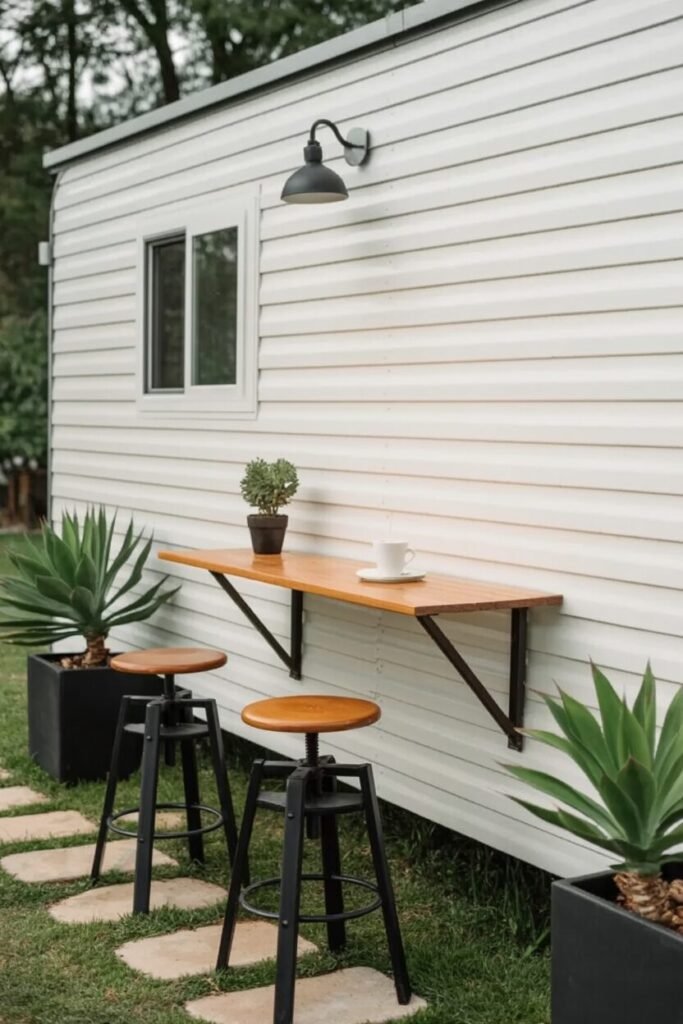Ways to Elevate Mobile Home Curb Appeal—Style Over Size
Thinking about giving your mobile home a facelift but don’t know where to start? We’ve got you covered! Forget the old myth that a beautiful home needs to be a mansion.
The truth is, it’s all about clever design, personal touches, and a little bit of gardening magic. Our ultimate guide is here to prove that with a few smart ideas and some elbow grease, you can transform your mobile home’s curb appeal from ordinary to absolutely spectacular.
We’ve compiled some fantastic ways to elevate your home’s exterior, focusing on friendly, budget-conscious tips that will have your neighbors doing a double-take. Ready to unlock the full potential of your home’s outdoor space? Let’s dive in!
Personalize Your Entrance with a Unique Mailbox
Don’t underestimate the power of a quirky, personalized touch! A unique mailbox like this one can be a fun and creative way to express your personality and give your home a distinct identity.
It serves as a fun focal point at the front of your property, instantly making it stand out from the rest. The red apple mailbox is a whimsical and memorable feature that complements the yellow siding of the house. When we talk about landscape design principles, this is a perfect example of adding a little “X-factor” that is both functional and stylish.
For your own home, look for an opportunity to add a personal, bold element. Whether it’s a hand-painted sign or a custom-made mailbox, a small detail can leave a huge impression.
Build a Welcoming Deck and Walkway
If you’re looking for a more significant upgrade, a well-designed deck and walkway can seriously boost your curb appeal. This combination not only adds functionality but also integrates the home with the surrounding landscape. The walkway’s texture—a mix of small stones and ground cover—creates a clear, defined path.
Meanwhile, the wooden deck extends the living space outdoors. This is a fantastic example of using hardscaping to create structure and a sense of permanence. When designing your own, think about flow and connection. How can you make the path from the street to your front door as appealing as possible?
Light Up Your Path with Style
Imagine coming home to this—a warm, inviting glow that makes your home look like a cozy cottage from a fairytale. Lighting isn’t just for safety; it’s a powerful tool for landscape design.
The string lights on the porch and the charming lanterns along the walkway create a magical ambiance. This is a great example of creating layers of light and using repetition to guide the eye. We love how the varying heights and styles of the lanterns add character without looking messy.
For your own home, try mixing solar-powered lights with plug-in options to create a similar effect. A well-lit path not only welcomes guests but also highlights your home’s best features, proving that a little light can make a big difference.
Decorate Your Porch with Potted Plants
Nothing says “welcome home” quite like a vibrant collection of potted plants. This simple technique can completely transform your front porch. The key here is using a variety of sizes, colors, and textures to create visual interest.
Notice how the large pots anchor the stairs, while the hanging baskets add height and dimension. This approach follows the principle of rhythm and repetition, creating a harmonious and balanced look. We also recommend choosing plants that thrive in your climate and are easy to care for—nobody wants a front porch graveyard!
Bold colors like these bright yellows and deep purples pop against the neutral siding, making your home feel lively and full of personality. This is a low-effort, high-impact way to show off your style.
Add a Stunning Water Feature
Want to make your mobile home feel like a tranquil oasis? A stylish water feature can do the trick! The sound of running water is incredibly soothing, and a birdbath or small fountain can instantly elevate your curb appeal.
Just look at this setup; the crisp, white bowl on a textured pedestal creates a modern, clean look that’s a perfect contrast to the lush green landscaping. When we think about landscape principles, this is a great example of using focal points to draw the eye and create interest.
Plus, it’s a brilliant way to attract local wildlife—who doesn’t love seeing a bird take a bath? When you’re recreating this, consider the scale of your water feature relative to your home. You don’t want a massive fountain that overwhelms your yard. Opt for something with a simple, elegant design that complements your existing style.
Frame Your Garden Beds with Borders
A tidy garden bed can make your whole yard look more organized and well-kept. This raised bed design uses simple wooden borders to clearly define the planting areas, separating the lush white flowers and green hostas from the surrounding lawn.
This simple act of defining space and creating order can make even a small garden feel grander. The use of mulch around the plants is also a smart move—it helps retain moisture and keeps weeds at bay. When you’re working on your own garden beds, think about a material that complements your home’s style.
A clean, defined border is the secret to a professional-looking landscape, proving that sometimes, the simplest ideas make the biggest difference. And hey, it makes mowing the lawn a lot easier, too!
Flank Your Entrance with Statement Plants

Want to make a grand entrance? Use a pair of identical potted plants to frame your front door! This simple trick is a classic landscape design principle that creates symmetry and balance, making your home look polished and intentional.
The topiary plants in decorative terracotta pots give this mobile home a formal, elegant feel. The contrast between the dark shutters and the bright white door makes everything pop. We’re big fans of this look because it’s so easy to achieve, but the impact is huge—it’s like giving your home its own set of personal bodyguards, only greener and much less threatening.
We recommend choosing plants that can handle the amount of sunlight your entrance gets and are easy to maintain. A well-placed pair of plants can make your front door the star of the show, proving that you don’t need a fancy mansion to have a fancy entrance.
Create a Cozy Outdoor Sitting Area
Who says a mobile home can’t have a chic patio? Creating an outdoor sitting area is a fantastic way to extend your living space and make your home feel more substantial. Just look at this setup—a simple wooden bench with comfy cushions and a striped rug transforms a small deck into a stylish and inviting nook.
This design uses symmetry and balance to create a clean, modern look. The plants in wooden planters add a touch of nature, blending the man-made structure with the surrounding greenery. We really love this design because it’s both practical and beautiful, and we’ve seen firsthand how a little effort in this area pays off big.
To recreate this vibe, think about your space and choose furniture that fits the scale—no one wants a giant sofa that swallows their whole deck! A few well-placed plants and a durable outdoor rug are all you need to create a personal haven.
Grow a Vertical Herb Garden
Short on ground space? Go vertical! A vertical garden is a brilliant, space-saving solution that can be both beautiful and practical. This setup, with multiple tiers of wooden boxes, creates a stunning wall of greenery.
This is a great example of innovative design and efficient use of space. We can already smell the fresh basil and mint! This idea proves that you can have a thriving garden, even without a huge yard. We love this solution because it promotes urban gardening and healthy eating.
To make your own, consider using cedar wood for its durability and resistance to rot. You can grow herbs, small vegetables, or just pretty flowers. It’s a fun project that adds a unique, eye-catching element to your home, and who knows—you might just discover your inner chef!
Install Custom Window Boxes
Window boxes are like jewelry for your home—they add color, texture, and a ton of personality. These long, custom-built wooden planters are a genius way to add beauty right where you can see it. Filled with a mix of colorful flowers and trailing vines, they soften the hard lines of the house and shutters.
This is a great example of using vertical space and creating visual flow from the windows down. The key to a good window box is planting a mix of “thrillers” (tall, spiky plants), “fillers” (mounding plants), and “spillers” (trailing plants).
As a gardening enthusiat who loves a good DIY, we can tell you that this is a fun weekend project. It’s a great way to add a touch of cottage charm, making your mobile home feel cozy and lived-in. Just be sure to drill drainage holes—your plants will thank you for not giving them a watery grave!
READ MORE >> “How to Make a Mobile Home Look Like a House“
Your Mobile Home, Elevated: One Detail at a Time!
And there you have it—simple but impactful ways to make your mobile home a standout. Remember, creating a beautiful outdoor space isn’t about grand gestures; it’s about the little things. From a welcoming path and a pop of color from flowers to a quirky mailbox that shows off your personality, every detail adds up.
You don’t need a huge budget or a sprawling yard to have a home that you’re proud of. Your mobile home has so much potential, and with a little creativity, you can show the world that style truly does triumph over size. Now go on, make your home shine!

